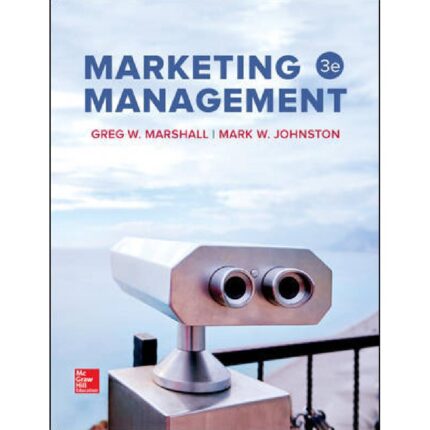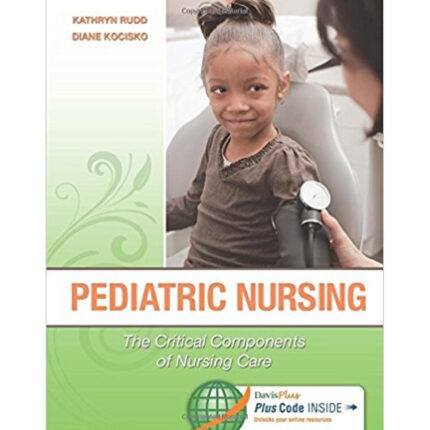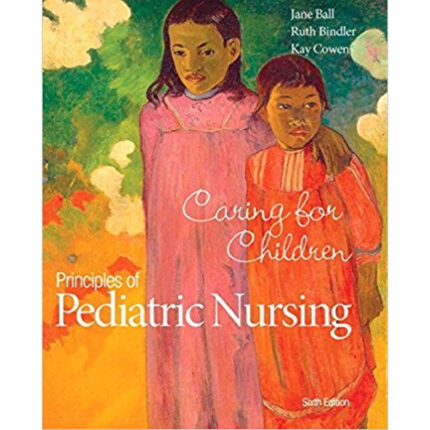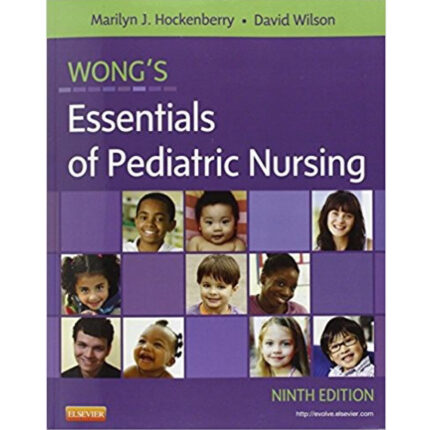CHAPTER 11: GROWTH AND DEVELOPMENT OF THE SCHOOL-AGED CHILD
MULTIPLE CHOICE
1. A parent asks the pediatric nurse, “How tall is the average 6-year-old boy, and how much does the average 6-year-old boy weigh?” After advising the parent that each child is unique and growth is affected by many factors, the nurse would give the average height and weight for a 6-year-old boy as:
a. 36 inches tall and 37 pounds c. 50 inches tall and 54 pounds
b. 46 inches tall and 45 pounds d. 60 inches tall and 63 pounds
ANS: B
Feedback
A Incorrect: This value is not identified as being consistent with the average height and weight of a 6-year-old boy.
B Correct: At 6 years, the average boy weighs 45 pounds and is 46 inches tall.
C Incorrect: This value is not identified as being consistent with the average height and weight of a 6-year-old boy.
D Incorrect: This value is not identified as being consistent with the average height and weight of a 6-year-old boy.
PTS: 1 REF: p. 332 – Growth and Development of the School-Age Child
OBJ: Cognitive Level: Comprehension
2. When working with school-aged children, the nurse should keep in mind that these children will increase their weight by how many pounds per year?
a. 1-2 c. 5-6
b. 3-4 d. 7-8
ANS: C
Feedback
A Incorrect: This value is not consistent with the identified weight gain per year in this population.
B Incorrect: This value is not consistent with the identified weight gain per year in this population.
C Correct: During the school-aged years, the child’s weight increases by 5-6 pounds per year.
D Incorrect: This value is not consistent with the identified weight gain per year in this population.
PTS: 1 REF: p. 332 – Growth and Development of the School-Age Child
OBJ: Cognitive Level: Comprehension
3. The nurse in the pediatric clinic measures a 9-year-old child’s height and finds that the child has grown 4 inches in 1 year. The nurse will discuss this increase in height with the caregivers, keeping in mind that an increase of 4 inches in 1 year, when compared to the usual increase for a school-aged child, is:
a. just below average c. slightly above average
b. average d. double the average
ANS: D
Feedback
A Incorrect: This option underestimates the increase experienced for this child.
B Incorrect: This option underestimates the increase experienced for this child.
C Incorrect: This option underestimates the increase experienced for this child.
D Correct: The average child’s height increases by 2 inches per year. Therefore, an increase of 4 inches in 1 year is twice the average increase.
PTS: 1 REF: p. 332 – Growth and Development of the School-Age Child
OBJ: Cognitive Level: Comprehension
4. The school nurse is talking with a group of parents about the growth and development of their school-aged children. A parent asks the nurse, “Just what are growing pains?” Which of the following is the best response?
a. “The bones hurt when calcium builds up and the bones are stretching out in length.”
b. “When the long bones are growing faster than the attached muscle, pain can occur.”
c. “The nerves are chemically irritated when the bones are elongating in growth.”
d. “As the bones get longer, the skin has to grow and stretch and this hurts.”
ANS: B
Feedback
A Incorrect: Growing pains are not the result of calcium building up or the bones are stretching out in length.
B Correct: Growing pains are the result of the long bones growing faster than the attached muscles.
C Incorrect: Growing pains are not the result of the nerves being irritated
D Incorrect: Growing pains are not related to the stretching of skin.
PTS: 1 REF: p. 332 – Growth and Development of the School-Age Child
OBJ: Cognitive Level: Application
5. A parent asks the school nurse to explain there children usually feel growing pains. The nurse explains that the discomfort is usually in the:
a. toes, feet, and ankles c. hip and pelvis
b. knees, calves, and thigh d. fingers, wrists, and elbows
ANS: B
Feedback
A Incorrect: Growing pains are not typically experienced in the toes, feet, and ankles.
B Correct: The discomfort of growing pains is typically located in the knees, calves, and thighs.
C Incorrect: Growing pains are not typically experienced in the hip and pelvis.
D Incorrect: Growing pains are not typically experienced in the fingers, wrists, or elbows.
PTS: 1 REF: p. 332 – Growth and Development of the School-Age Child
OBJ: Cognitive Level: Application
6. The pediatric nurse is working with the parents of a school-aged child who has growing pains. The nurse recommends that the parents try which of the following as comfort measures?
a. sandal-type shoes without enclosed toes or backs
b. ice packs, cold showers, and no heat
c. analgesics, gentle massage, and warm baths
d. exercise, hot packs, and herbal teas
ANS: C
Feedback
A Incorrect: Sandal-type shoes without enclosed toes and back are not identified as treatment modalities for growing pains.
B Incorrect: Ice packs, cold showers, and no heat are not identified as treatment modalities for growing pains.
C Correct: Treatment measures for growing pains include analgesics, gentle massage, and warm baths.
D Incorrect: Exercise, hot packs, and herbal teas are not identified as treatment modalities for growing pains.
PTS: 1 REF: p. 332 – Growth and Development of the School-Age Child
OBJ: Cognitive Level: Application
7. When parents select or approve physical activities for their children, they most need to select activities according to the:
a. interests of the child
b. abilities of the child
c. child’s potential for improvement
d. child’s potential for building lifelong skills
ANS: B
Feedback
A Incorrect: Physical activities should not be selected based solely upon the interests of the child.
B Correct: Due to the potential for muscles to be easily injured in the school-aged child, it is necessary to select physical activities that match the abilities of the child.
C Incorrect: Physical activities should not be selected based solely upon the child’s potential for improvement.
D Incorrect: Physical activities should not be selected based solely upon the child’s potential for building lifelong skills.
PTS: 1 REF: p. 332 – Growth and Development of the School-Age Child
OBJ: Cognitive Level: Application
8. The nurse working on the pediatric unit checks the apical pulse of a school-aged child and finds a rate of 95 beats per minute while the child is lying in bed. The best action on the part of the nurse is to:
a. Chart the apical pulse of 95 as it is in the normal range.
b. Recheck the apical pulse for a full minute, as it is somewhat high.
c. Call the pediatrician.
d. Have another nurse recheck the apical pulse.
ANS: A
Feedback
A Correct: The average apical rate for the school-aged child is 90-95 beats per minute. Therefore, the nurse should chart the apical pulse of 95 as it is within the normal range.
B Incorrect: An apical rate of 95 beats per minute in the school-aged child would not warrant rechecking the apical pulse for a full minute.
C Incorrect: An apical rate of 95 beats per minute in the school-aged child would not warrant calling the pediatrician.
D Incorrect: An apical rate of 95 beats per minute in the school-aged child would not warrant having another nurse recheck the apical pulse.
PTS: 1 REF: p. 333 – Physiological Development
OBJ: Cognitive Level: Application
9. The pediatrician is doing a routine physical exam on a school-aged child and tells the parents that their child has an innocent heart murmur. The parents ask the nurse what this means. The best answer is:
a. “The mitral valve is not closing tightly and some blood is getting through when the heart is not contracting.”
b. “If the child’s heart is not overworked for the next few years, this problem will cure itself.”
c. “This is a minor congenital anomaly and is nothing to worry about as it will cause no problems.”
d. “This is the sound of blood normally flowing through the heart and is not associated with any heart problem.”
ANS: D
Feedback
A Incorrect: Innocent heart murmurs are not associated with the mitral valve not closing tightly.
B Incorrect: It is not necessary to rest the heart for several years for the problem to cure itself.
C Incorrect: Innocent heart murmurs are not associated with congenital anomalies.
D Correct: An innocent heart murmur is created from the sound of the blood flowing through the heart and can be heard if the child’s chest wall is thin. They are not clinically significant.
PTS: 1 REF: p. 333 – Physiological Development
OBJ: Cognitive Level: Application
10. Parents ask the nurse if their child will always have this innocent heart murmur. Which of the following is the best answer?
a. “Yes, this murmur will not disappear and your child will have it throughout life.”
b. “No, this murmur will no longer be heard when your child becomes an adolescent.”
c. “Most children are lucky and the murmur goes away after a year or two.”
d. “This murmur will usually be cured with a period of rest, diet, and medication.”
ANS: B
Feedback
A Incorrect: Innocent heart murmurs will not be heard when the child reaches adolescence; therefore, it will not continue throughout life.
B Correct: As many as 50% of all school-aged children have an innocent heart murmur between the ages of 6 and 10 years of age. Such murmurs are not associated with heart disease and will not be heard when the child reaches adolescence.
C Incorrect: It is not completely accurate to suggest that most children are “lucky,” with the murmur going away after a year or two. While the murmur may resolve within a few years, it is prudent to explain the pathophysiology of the resolution, rather than to simply suggest it is grounded in luck.
D Incorrect: The murmur is not cured as a result of rest, diet, and medication.
PTS: 1 REF: p. 333 – Physiological Development
OBJ: Cognitive Level: Application













Reviews
There are no reviews yet.